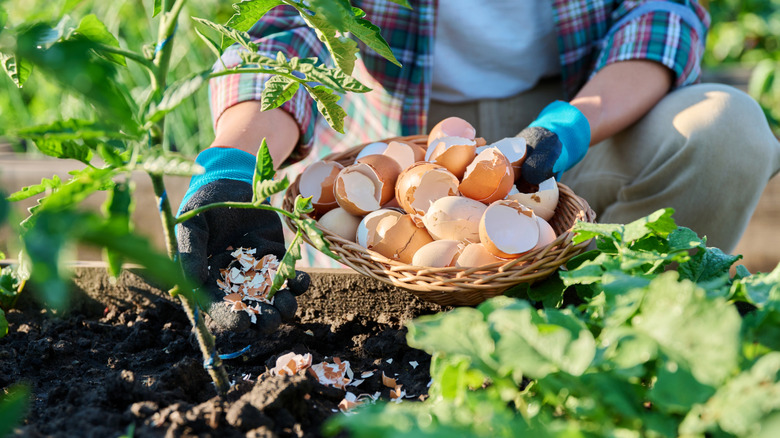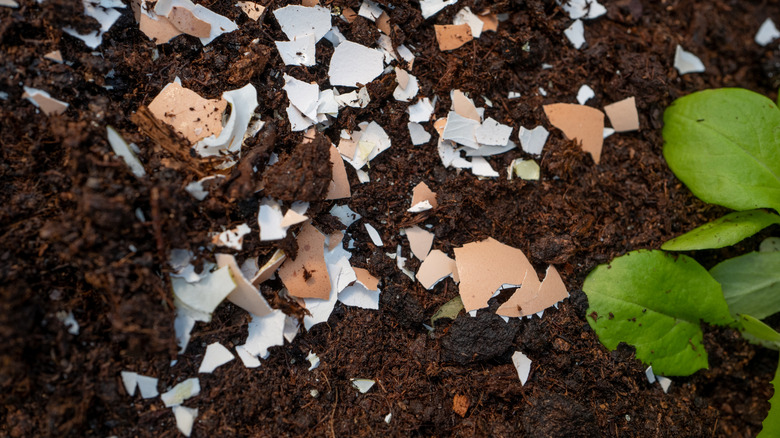Don't Toss Your Egg Shells, Repurpose Them In Your Garden Instead
We may receive a commission on purchases made from links.
After years of climbing egg prices, it only makes sense for consumers to use as much of the egg as possible. But using all of this ingredient means more than just the yolks and whites. Use empty egg shells in your home garden, where they add critical nutrients to soil to help keep plants growing. This includes not just flowers, but also a wide array of fruits, vegetables, and herbs.
Egg shells are extremely high in calcium, which plants can absorb through the soil to boost cell wall development. The high calcium content also lowers the pH levels of soil, which can be good for managing soil acidity for sensitive plants like tomatoes, peppers, potatoes, and more.
Egg shells can also be used to deter outdoor pests like slugs, which have a hard time traveling through the broken shards. Additionally, broken egg shells add structure to the soil, especially as part of compost, adding an airiness to the soil that improves plant growth.
How to use egg shells in a home garden
There are a few things to know before adding egg shells to your garden. First, use something like the MySoil Test Kit to determine the baseline acidity and calcium content of the soil. It might already be calcium rich or have the correct acidity for your desired plants. Nutrient-dense soil may be part of how to grow the best tomatoes on the block, for instance, but too many nutrients can cause plant-killing diseases like blossom-end rot.
Egg shells should be rinsed and dried prior to garden use. For best results, the shells should also be crushed before being added to soil or compost. Egg shells take a long time to biodegrade, but smaller pieces will break down faster.
If any broken bits of shell got in your yolks and whites, you can use those too. Use a half egg shell to scoop any shell pieces out of a cracked egg. Just don't cook with an already-broken egg, as the Salmonella risk for your food is too high.

